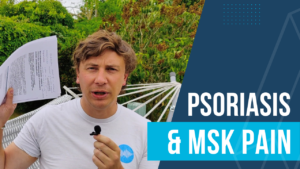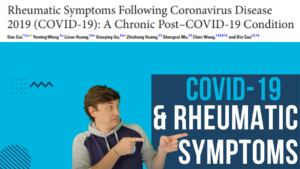Intro
Day to day in our MSK clinics we discuss the daily pattern of symptoms with pretty much everyone that attends. The obvious reason being that it can tell you an absolute ton about the nature of the condition and therefore is a significant factor in our clinical reasoning. We learn early on in our training about night pain, I recall drumming it into my brain “unremitting night pain is a red flag”. Everyone who attends though seems to bring with them a nuanced pattern of symptoms almost as if they are all individuals… To try and help you out with your clinical reasoning I have outlined the patterns to look for to recognise when your attendee may have a systemic inflammatory condition that warrants further questioning and/or onward referral.

In this context the symptoms referred to are pain and/or joint stiffness, don’t forget this can be in any combination i.e. for an Axial Spondyloarthropathy, spinal stiffness and hand pain OR spinal pain and spinal stiffness OR just spinal pain OR just spinal stiffness etc could be reported by the individual.
Night time
As mentioned above night pain is an important line of subjective questioning. When it comes to inflammatory conditions there are specific patterns of the symptoms (pain and/or joint stiffness) that when present warrant deeper questions to assess the index of suspicion and likelihood you need to refer this individual onwards.
Waking with symptoms in the second half of the night, especially requiring the need to get out of bed and move around is our first indicator, this is related to the inflammatory systems more active and passive periods of during the sleep cycle.
 Early Morning
Early Morning
Symptoms that are present on waking and linger are our next line of questioning. The guidelines used in research relating to inflammatory conditions stipulate this lasts greater than 60 minutes, I am an advocate of relaxing this time frame down to greater than 30 minutes. I believe this will still help to differentiate between other conditions which will have symptoms in the morning but usually ease quite quickly (Osteoarthritis and Tendinopathies spring to mind).
Activity/Exercise/Rest
The relationship of symptoms to rest and activity is our final call on the 24-hour pattern line of reasoning. Most conditions we see come into the clinic will be worse with activity and better with rest (low back pain, Osteoarthritis, ligament sprain and so on…). Inflammatory conditions are the opposite, worse in the car, sat at a desk, watching TV… Better on walking, in the gym, gardening… Look for phrases such as “If I just carry on and don’t stop I am better off”, “It is terrible at work but so much better during and after the gym”.
Outro
Remember that these factors on their own are not diagnostic, they need to be taken in the context of the individual’s symptoms, history, co-morbidities and other medical investigations. They are however an important part of your clinical reasoning process when retaining systemic inflammatory conditions in your differential diagnosis.


